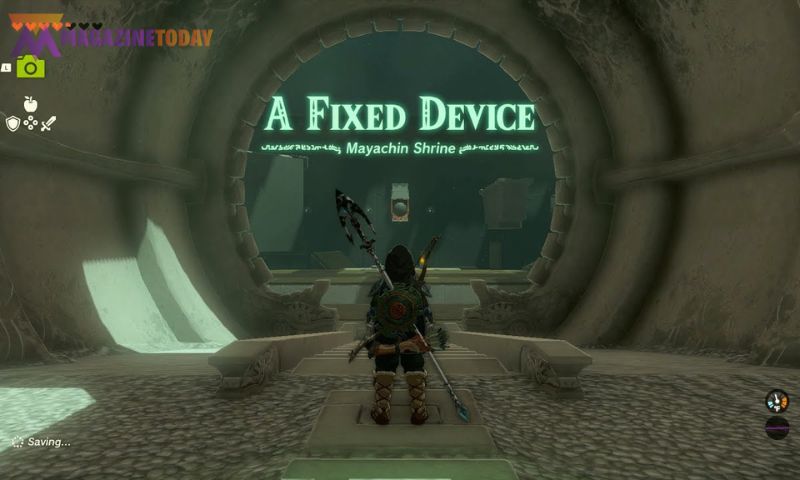In the ever-evolving realm of architecture and cultural landmarks, the concept of a fixed device shrine holds a fascinating position. These structures, often imbued with historical, spiritual, and technological significance, represent the convergence of tradition and innovation. This article delves into the essence of a fixed device shrine, its historical roots, cultural importance, and its role in modern society.
Understanding the Fixed Device Shrine


What Is a Fixed Device Shrine?
A fixed device shrine is a sacred or symbolic structure integrated with technological or mechanical elements. These shrines often combine traditional architectural styles with fixed technological devices that serve both functional and symbolic purposes. Examples include solar-powered monuments, digital displays in temples, or mechanically-operated sculptures.
Historical Context
Historically, shrines have been central to spiritual practices across cultures. From Shinto shrines in Japan to ancient Greek sanctuaries, these spaces were designed to honor deities or commemorate significant events. The incorporation of fixed devices into shrines is a modern development, reflecting humanity’s desire to merge tradition with technology.
Cultural Significance
Symbolism and Meaning
Fixed device shrines symbolize the blending of past and future. They honor traditional values while embracing modern advancements, serving as a metaphor for cultural continuity. These structures often feature elements that reflect the community’s heritage, alongside innovative devices that address contemporary needs.
Spiritual Importance
In many cultures, shrines serve as sacred spaces for meditation, prayer, or rituals. Adding fixed devices, such as automated lighting or sound systems, enhances the spiritual experience by creating an immersive environment. For instance, some shrines use sensory technology to simulate natural phenomena like rain or wind, amplifying the connection to nature.
Architectural Features
Traditional Elements
Despite the technological additions, fixed device shrines retain traditional architectural features. These may include:
Ornate carvings and sculptures
Symmetrical designs
Use of natural materials like wood and stone
Innovative Additions
The fixed devices integrated into these shrines can range from simple to sophisticated. Examples include:
Solar panels for sustainable energy
Interactive touchscreens for visitor information
Mechanized doors or statues that respond to movement
Famous Examples of Fixed Device Shrines
Modern Innovations
Meiji Jingu Shrine, Japan This iconic Shinto shrine has incorporated solar panels to power its lighting system, demonstrating a commitment to environmental sustainability.
Sagrada Familia, Spain While not traditionally classified as a shrine, this architectural masterpiece features innovative design elements like computerized lighting systems that enhance its spiritual ambiance.
Cultural Landmarks
Digital Mandir, India Combining ancient temple architecture with digital screens, this shrine allows worshippers to view live-streamed rituals and ceremonies.
The Shrine of Remembrance, Australia This war memorial integrates fixed devices such as automated projection systems that display historical footage and tributes.
Challenges and Criticisms
Balancing Tradition and Technology
One of the primary challenges in designing a fixed device shrine is maintaining a balance between traditional aesthetics and technological functionality. Critics argue that excessive use of technology may detract from the shrine’s spiritual essence.
Ethical Concerns
The integration of fixed devices raises ethical questions about accessibility and commercialization. For instance, some argue that using advanced technology might exclude certain groups who are less tech-savvy or financially disadvantaged.
The Future of Fixed Device Shrines
Technological Advancements
As technology evolves, fixed device shrines are likely to become more sophisticated. Innovations such as augmented reality (AR) and artificial intelligence (AI) could revolutionize the visitor experience, providing personalized tours or interactive spiritual guidance.
Sustainability Focus
The emphasis on sustainability is expected to grow. Future shrines may incorporate green technologies like rainwater harvesting systems, energy-efficient lighting, and biodegradable materials.
Frequently Asked Questions
1. What is the purpose of a fixed device shrine?
A fixed device shrine serves as a symbolic or sacred structure that combines traditional design with technological elements to enhance functionality and visitor experience.
2. Are fixed device shrines common worldwide?
While the concept is gaining popularity, fixed device shrines are more prevalent in regions that value both cultural preservation and technological innovation.
3. How do fixed device shrines impact the environment?
Many fixed device shrines incorporate sustainable technologies like solar panels and energy-efficient systems, minimizing their environmental footprint.
4. Can technology detract from the spiritual essence of a shrine?
This depends on the implementation. Thoughtful integration of technology can enhance the spiritual ambiance, while excessive use may detract from the traditional essence.
5. What are some famous examples of fixed device shrines?
Notable examples include the Meiji Jingu Shrine in Japan and the Digital Mandir in India, both of which successfully blend tradition with modern technology.
Final Thoughts
The concept of a fixed device shrine represents a harmonious blend of tradition and modernity, showcasing humanity’s ability to honor the past while embracing the future. By integrating technology thoughtfully, these shrines preserve their cultural significance while addressing contemporary challenges. As we look ahead, fixed device shrines are poised to become symbols of innovation, sustainability, and spiritual connection, inspiring future generations to find balance in an ever-changing world.






